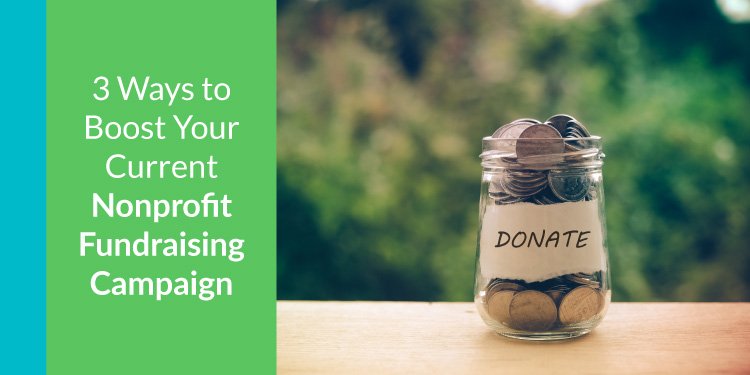
As a nonprofit professional, you’ve seen how organizations rely on the benevolence of their donors for most of their funding. After all, fundraising is how you’re able to pay your staff and drive your mission forward.
Nonprofit fundraising campaigns are more than just raising cash for your cause. They’re also about helping your organization form relationships with donors, secure recurring support, and recognize the generous members of your community. This increased visibility can lend itself to even greater fundraising opportunities as time goes on.
In this guide, we’ll explore three best practices for boosting your nonprofit’s current fundraising campaigns:
- Make use of your donor data.
- Engage donors by giving them something in return.
- Foster your supporter relationships.
Effective fundraisers require genius event ideas, ample planning, and time. Now is the perfect time for your organization to optimize your existing fundraising strategies. Let’s dive into best practices for increasing your campaign’s potential!
1. Make use of your donor data.
The donor data your organization captures can grow your fundraising efforts exponentially—use it to guide the decisions you make to reach your fundraising goals. If you find your data pointing you in a new direction, don’t be afraid to tweak your strategy as your campaign goes on!
Your organization can make the most out of your data in a multitude of ways that will boost your fundraising campaign’s performance. Actively collect data from a variety of sources such as:
- Incoming donations
- Event sign-ups
- Social media engagement metrics
- Email engagement and open rates
- Any points of contact with your organization during the fundraising process
Then, customize your communications to each recipient based on what you know about them from your data collection. Even basic personalization, such as greeting them by name, can produce messages that are more likely to catch supporters’ eyes.
Implement a multi-channel strategy to reach out on the various channels that are most pertinent to your supporters. Consider using the following tried-and-true platforms as part of a multi-channel marketing push:
- Direct mail
- Social media channels
- Your site’s blog
- Phone calls
For example, if your donors don’t engage with Twitter, you'll know to just not bother with it. On the other hand, if a certain segment is highly engaged with direct mail, you can tailor your mail appeals to that particular segment. By contacting the right people at the right time with the right messages, you can dramatically boost your chances of securing a donation.
2. Engage donors by giving them something in return.
When your team evaluates the progress of your fundraising strategy, it’s crucial that you maintain supporter engagement to capture more donors. Truly immersive and exciting fundraisers will lead to a higher return on current fundraising investments and increase your retention rates.
For example, product fundraisers are a creative way to engage donors by giving them something tangible in return for their support. With these fundraisers, you can sell:
- Food: Edible products are easy items to sell when donors are enticed by a tasty treat. ABC Fundraising’s fundraising ideas list recommends food items like cookie dough or pretzels as top sellers.
- Seasonal items: for the season. For example, you could sell Christmas wreaths or Easter baskets.
- Discounts: Partner with local businesses and establishments to offer discounts on goods and services in your area. Not only will you strengthen your nonprofit’s community support, but you’ll also sell a lot of discount cards in support of your mission.
Engaging fundraisers are doubly successful when marketed successfully. Double the Donation’s marketing ideas for nonprofits recommends marketing through technology, such as your nonprofit’s website and social media channels, to maximize your fundraising results.
3. Foster your supporter relationships.
A successful fundraising campaign involves donor stewardship throughout the entire process. Your supporters chose to give time and money to you for a reason, so let them know you appreciate it.
Cultivating relationships with your donors is crucial to pushing your mission forward with a strong community of supporters. Show your appreciation for your supporters’ attention and generosity throughout your entire campaign.
For example, while hosting a cookie dough fundraiser, you might take note of the following information:
- Who participates? You’ll want to thank donors, volunteers who actually sold the cookie dough, and anyone else who was influential in kickstarting your campaign.
- How much do people give? While every bit of support is helpful, you should thank supporters for their specific contributions and call out any major donors. If one donor purchased 50 tubs of cookie dough, they should get a special shoutout!
- What do people think? Post-event surveys are a classic donor stewardship tactic, but have you considered sending a mid-campaign survey? Ask if your donors enjoyed the cookie dough, if they’d buy again, and what other products they’d like to see. This doesn’t have to be a formal survey; consider publishing a poll on social media or asking for comments on a post.
Asking for feedback is also an effective way to separate yourself from other organizations hosting similar fundraisers. By building an emphasis on stewardship in every stage of your campaign, you’ll increase the odds that new and old supporters alike will want to stick around.
Taking stock of your strategies and looking for ways to improve your fundraising is always a smart move. Make sure you’re covering your bases with these three core tips. Your current (and future) fundraising campaigns will benefit from frequent data-driven evaluation, creativity, and appreciation for those who give to your cause.